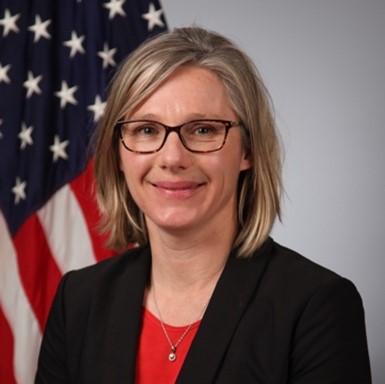 Carrie Noren, Ph.D.
Carrie Noren, Ph.D.Section Chief and Research Engineer, Air Force Research Laboratory
Friday, April 5, 2024, 3:00 - 4:00 PM
In Person JH-109
Title: An Overview of Research in the Laser Division of the Air Force Research Laboratory
ABSTRACT: From photons to target, the Laser Division in AFRL is performing fundamental and applied research to solve the challenges with putting a laser weapon system on an airborne platform. A primary challenge is the SWaP (size, weight, and power) that needs to be reduced for airborne platforms. Another challenge is the turbulent fluid dynamics around an aircraft that needs to be mitigated or predicted to image and focus a high-energy laser on the target. This turbulent airflow distorts the laser beam and induces jitter to the optical system. We study, test, and model sensors, algorithms, and outer mold designs to enable a high-energy laser to hit its target with high power and precision. I will dive into the technologies we study, our current projects, and how this aligns with the AFRL’s goals to have a laser weapon system on an airborne platform.
BIO: Dr. Carrie Noren is a Section Chief and Research Engineer within the laser division at AFRL and has been a part of their team for nearly 20 years. Her education includes a BSE in Aerospace Engineering from the University of Michigan and a PhD in Mechanical Engineering from the University of New Mexico. She completed her doctoral dissertation work at AFRL, studying trip jets in supersonic flow to increase chemical mixing in a chemical laser. After completing her dissertation, Dr. Noren studied supersonic diffuser technology, dramatically increasing diffuser efficiencies and reducing the weight on a chemical laser system. Once chemical lasers were no longer preferred for airborne laser systems, she turned to solving the challenges associated with propagating lasers from an aircraft to its target, performing and analyzing wind tunnel experiments to understand the physics driving the break-up of a laser beam profile caused by turbulent airflow. She designed and led the construction of a Mach 2 wind tunnel at AFRL to facilitate the study of beam propagation through flow fields seen by airborne platforms. While at AFRL, Dr. Noren was selected as an exchange scientist/engineer, where she and her family lived and worked in Stuttgart, Germany for two years. She worked at the German Aerospace Center (DLR), utilizing high-speed optical diagnostics to visualize combustion species in flow regimes representative of turbine engines used for power generation.